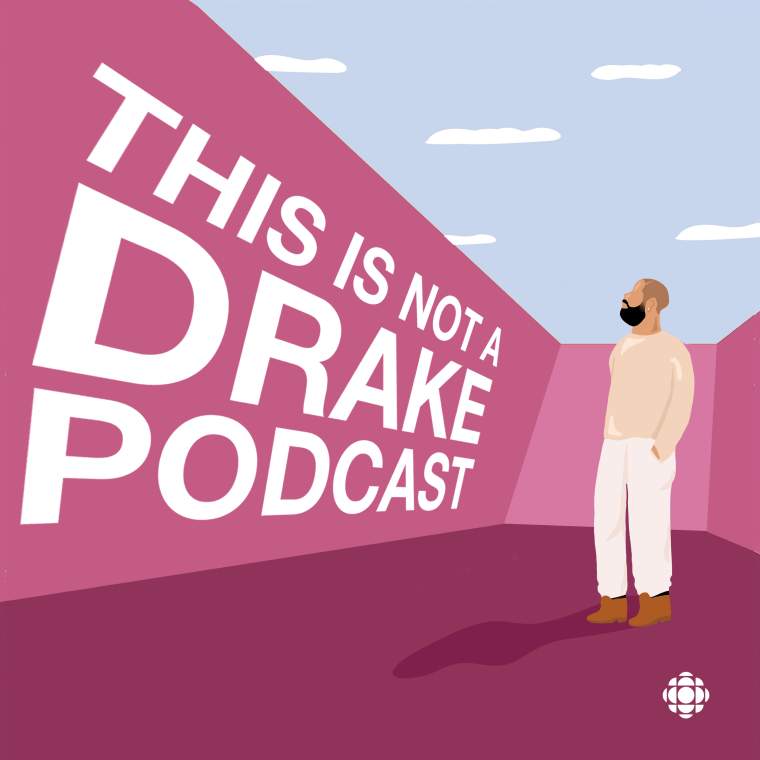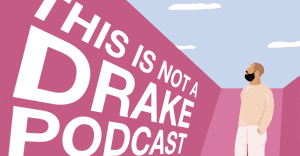Rappers have been singing on their songs from the very beginning. You only have to listen to Kevie Kev’s “All Night Long,” to hear melody making its way into some of the earliest rhymes. However, it has become a popular train of thought in recent years to give acclaim to Drake for not only popularising the melding of rap and R&B, but also pioneering it.
There’s no denying that a byproduct of Drake’s path to the top of the rap world has been the blurring of the lines between hip-hop, pop, and R&B. “Hotline Bling,” like many of Drake’s biggest hits, is agnostic in style and has helped clear a lane for a mainstream in which pop hooks and hip-hop production sit comfortably alongside one another.
In a world where pop stars like Justin Bieber and Ariana Grande gleam both style and cadence from the hip-hop world it’s hard to imagine that rappers were once forced to feed off scraps from the mainstream in order to gain exposure to wider audiences. Listening to CBC’s This Is Not A Drake Podcast, however, offers a clear and nuanced lineage of the ways in which singing and rapping have constantly orbited one another, starting out as foes before crossing paths at increasingly regular intervals and eventually merging into one. The podcast, a new six-episode series hosted by Ty Harper and out now via the CBC, uses Drake’s rise and subsequent superstardom as a lens through which to view different aspects of hip-hop culture. In its fourth and stand-out episode, Harper and a host of guests offer an in-depth history of the confluence between rap and R&B styles, taking in everything from close-minded 1980s radio programmers to the game-changing introduction of Autotune to the production studio.
The exact moment you pinpoint rappers singing and singers rapping likely depends on your age. Perhaps you think it is when Roxanne Shante appeared on “Loosey’s Rap,” the 1988 Rick James hit, or when Eric B and Rakim popped up alongside Jody Watley on “Friends” the following year. The emergence of New Jack Swing was undeniably built on a confluence of R&B structure with a swagger and masculinity straight out of hip-hop so maybe that’s where to plant the flag. Listen to any Teddy Riley-produced hit and it is hard to deny the melodies that stick out as brightly as the colourful outsized clothes. By the ‘90s the walls were broken down further by acts like Bone Thugs-N-Harmony who showed a softer side to the decade than the hard-boiled decade-defining rhymes of Biggie and Tupac. However, the struggle to be recognized as masculine while relying on singing and melodies in your music was real.
Enter 50 Cent, a muscle-bound New York gangster rapper whose credibility was predicated on him having been shot nine times. His emergence perhaps represents an exact midpoint between the way things were and what they went on to become. The 2003 album Get Rich Or Die Tryin’ was a battle-scarred collection of stories from the street that depicted a life of high risk and even higher reward. It was also a collection of songs rich in melody, 50’s slurred delivery adding an added sing-song quality to tracks like “Many Men” and “P.I.M.P.” These two facts caused a tectonic shift in the culture after which it was no longer considered “soft” to sing on your rap tracks, nor was it necessary to turn to an R&B singer for assistance. As Phonte of Little Brother, another name often credited with pioneering the sound Drake popularised, tells the podcast: “50 Cent represented the traditional image of masculinity, the muscular, tough guy. People thought that if he could get away with singing then the lane was open.”
That lane is soon filled by artists such as T-Pain and Kanye West utilising Auto-Tune in increasingly experimental ways, taking the jigsaw pieces 50 Cent mixed up and creating a new, more introspective image for themselves and hip-hop too. Mark Anthony Neil, Professor of Black Popular Cultureat Duke University, argues that Drake’s ability to naturally do what Kanye used a vocoder for helped push him forward. “Auto-tune is an out of body experience but it’s a way to bring melody to hip-hop in ways that rapping doesn’t allow you,” Neil tells Harper in the fourth episode of This Is Not A Drake Podcast. “Drake found a way in his natural voice to tap into that interiority without having to use that out of body experience. What makes Drake Drake is that he claimed this and brought it back to the actual body.”
There are many names you could throw into the mix along this journey. Lauryn Hill, Andre 3000, Bell Biv Devoe and their “hip-hop smoothed out on the r&b tip with a pop feel” all spring to mind. Turn on the radio now and listen to Lil Baby, Gunna, and Lil Uzi Vert carry on the lineage of alien cadences they learned from Atlanta forefathers Future and Young Thug. So no, Drake didn’t invent the idea of singing and rapping together. And yet, would the pop landscape sound as it does today if Drake hadn’t walked the specifically melodic path he did to get to where he is today? The walls between genres have been cracking since day one. Drake, to his credit and good fortune, just happened to be in the middle of a chorus when they collapsed entirely.


